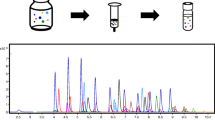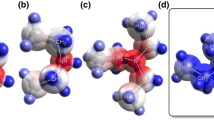Abstract
Four ethyl α-halogenated acetates were tested in (1) sham and (2) nonsham combinations and (3) with a nonreactive nonpolar narcotic. Ethyl iodoacetate (EIAC), ethyl bromoacetate (EBAC), ethyl chloroacetate (ECAC), and ethyl fluoroacetate (EFAC), each considered to be an SN2-H-polar soft electrophile, were selected for testing based on their differences in electro(nucleo)philic reactivity and time-dependent toxicity (TDT). Agent reactivity was assessed using the model nucleophile glutathione, with EIAC and EBAC showing rapid reactivity, ECAC being less reactive, and EFAC lacking reactivity at ≤250 mM. The model nonpolar narcotic, 3-methyl-2-butanone (3M2B), was not reactive. Toxicity of the agents alone and in mixture was assessed using the Microtox acute toxicity test at three exposure durations: 15, 30 and 45 min. Two of the agents alone (EIAC and EBAC) had TDT values >100%. In contrast, ECAC (74 to 99%) and EFAC (9 to 12%) had partial TDT, whereas 3M2B completely lacked TDT (<0%). In mixture testing, sham combinations of each agent showed a combined effect consistent with predicted effects for dose-addition at each time point, as judged by EC50 dose-addition quotient values. Mixture toxicity results for nonsham ethyl acetate combinations were variable, with some mixtures being inconsistent with the predicted effects for dose-addition and/or independence. The ethyl acetate–3M2B combinations were somewhat more toxic than predicted for dose-addition, a finding differing from that observed previously for α-halogenated acetonitriles with 3M2B.




Similar content being viewed by others
References
Bliss CI (1939) The toxicity of poisons applied jointly. Ann Appl Biol 26:585–615
Borgert CJ, Quill TF, McCarty LS, Wilson AM (2004) Can mode of action predict mixture toxicity for risk assessment? Toxicol Appl Pharmacol 201:85–96
Broderius SJ, Kahl MD, Hoglund MD (1995) Use of joint toxic response to define the primary mode of toxic action for diverse industrial organic chemicals. Environ Toxicol Chem 14:1591–1605
Calabrese EJ (1991) Multiple chemical interactions. Lewis, Chelsea
Celik I, Sürücü O, Dietz C, Heymach JV, Force J, Höschele I et al (2005) Therapeutic efficacy of endostatin exhibits a biphasic dose-response curve. Cancer Res 65:11044–11050
Chen JJ, Chen Y-J, Rice G, Teuscher LK, Hamernick K, Protzel A et al (2001) Using dose addition to estimate the cumulative risks from exposures to multiple chemicals. Regul Pharmacol Toxicol 34:35–41
Dawson DA, Scott BD, Ellenberger MJ, Pöch G, Rinaldi AC (2004) Evaluation of dose-response curve analysis in delineating shared or different molecular sites of action for osteolathyrogens. Environ Toxicol Pharmacol 16:13–23
Dawson DA, Pöch G, Schultz TW (2006) Chemical mixture toxicity testing with Vibrio fischeri: Combined effects of binary mixtures for ten soft-electrophiles. Ecotox Environ Saf 65:171–180
Dawson DA, Allen JL, Schultz TW, Pöch G (2008) Time-dependence in mixture toxicity with soft- electrophiles: 2. Effects of relative reactivity level on time-dependent toxicity and combined effects for selected Michael acceptors. J Environ Sci Health A 43:43–52
Dawson DA, Jeyaratnam J, Mooneyham T, Pöch G, Schultz TW (2010) Mixture toxicity of SN2-reactive soft electrophiles: 1. Evaluation of mixtures containing α-halogenated acetonitriles. Arch Environ Contam Toxicol 59(4):532–541
Dudek BC, Phillips TJ, Hahn ME (1991) Genetic analyses of the biphasic nature of the alcohol dose-response curve. Alcoholism 15:262–269
Gagan EM, Hull MW, Schultz TW, Pöch G, Dawson DA (2007) Time dependence in mixture toxicity with soft electrophiles: 1. Combined effects of selected SN2 and SNAr-reactive agents with a nonpolar narcotic. Arch Environ Contam Toxicol 52:283–293
Giraldo J, Vivas NM, Vila E, Badia A (2002) Assessing the (a)symmetry of concentration-effect curves. Pharmacol Ther 95:21–45
Gottschalk PG, Dunn JR (2005) The five-parameter logistic: A characterization and comparison with the four-parameter logistic. Anal Biochem 343:54–65
Hansch C, Leo AJ (1979) Substituent constants for correlation analysis in chemistry and biology. Wiley, New York
Hine J (1962) Physical organic chemistry, 2nd ed. [international student edition]. McGraw-Hill, New York
Hinman DJ (1987) Biphasic dose-response relationship for effects of toluene inhalation on locomotor activity. Pharmacol Biochem Behav 26:65–69
Hodges G, Roberts DW, Marshall SJ, Dearden JC (2006) Defining the toxic mode of action of ester sulfonates using the joint toxicity of mixtures. Chemosphere 64:17–25
Jacobs A (1997) Understanding organic reaction mechanisms. Cambridge University Press, Cambridge
McCarty LS, Mackay D (1993) Enhancing ecotoxicological modeling and assessment: Body burdens and modes of toxic action. Environ Sci Technol 27:1719–1728
Pöch G (1993) Combined effects of drugs and toxic agents: modern evaluation in theory and practice. Springer-Verlag, Vienna
Pöch G, Dittrich P, Holzmann S (1990) Evaluation of combination effects in dose-response studies by statistical comparison with additive and independent interactions. J Pharmacol Methods 24:311–325
Pöch G, Dawson DA, Reiffenstein RJ (1996) Model usage in evaluation of combined effects of toxicants. Toxicol Ecotoxicol News 3:51–59
Rand GM, Wells PG, McCarty LS (1995) Introduction to aquatic toxicology. In: Rand GM (ed) Fundamentals of aquatic toxicology: effects, environmental fate, and risk assessment, 2nd edn. CRC Press, Boca Raton, pp 3–67
Roberts DW, Schultz TW, Wolf EM, Aptula AO (2010) Experimental reactivity parameters for toxicity modeling: application to aquatic toxicity of Sn2 electrophiles to Tetrahymena pyriformis. Chem Res Toxicol 23:228–234
Schultz TW, Yarbrough JW, Johnson EL (2005) Structure-activity relationships for glutathione reactivity of carbonyl-containing compounds. SAR QSAR Environ Res 16:313–322
Steel RGD, Torrie JH (1980) Principles and procedures of statistics: a biometrical approach, 2nd edn. McGraw-Hill, New York
Van der Graaf PH, Schoemaker RC (1999) Analysis of asymmetry of agonist concentration-effect curves. J Pharmacol Toxicol Methods 41:107–115
Yang RSH (1994) Toxicology of chemical mixtures: case studies, mechanisms and novel approaches. Academic, San Diego
Acknowledgments
This study was made possible by Grants No. 2 R15 ES08019-03 and -04 from the National Institute of Environmental Health Sciences (NIEHS), National Institutes of Health (NIH). Its contents are solely the responsibility of the investigators and do not represent the official views of the NIEHS, NIH. Two undergraduate students (T. M. and J. J.) were supported by the NIH AREA Grant program.
Author information
Authors and Affiliations
Corresponding author
Rights and permissions
About this article
Cite this article
Dawson, D.A., Mooneyham, T., Jeyaratnam, J. et al. Mixture Toxicity of SN2-Reactive Soft Electrophiles: 2—Evaluation of Mixtures Containing Ethyl α-Halogenated Acetates. Arch Environ Contam Toxicol 61, 547–557 (2011). https://doi.org/10.1007/s00244-011-9663-1
Received:
Accepted:
Published:
Issue Date:
DOI: https://doi.org/10.1007/s00244-011-9663-1




